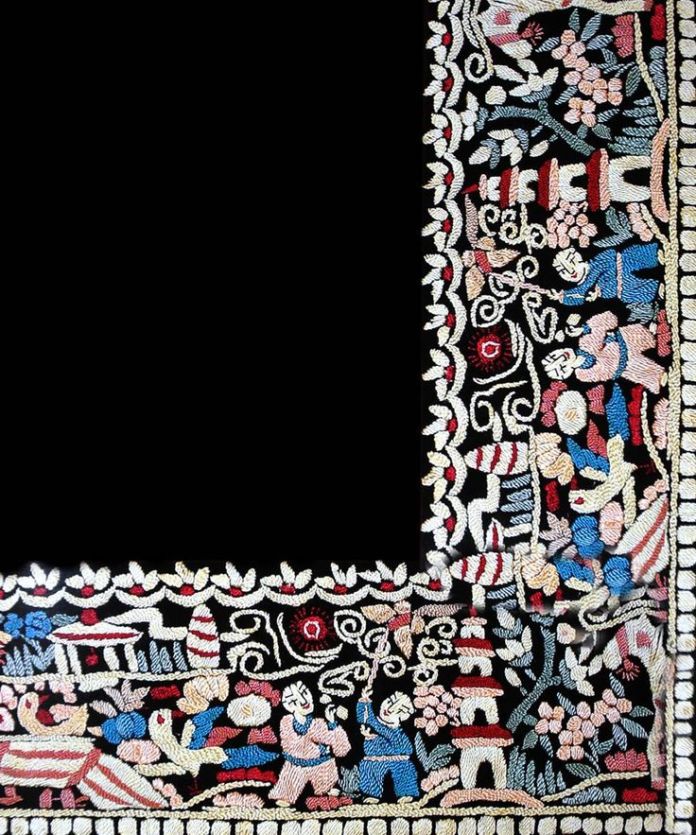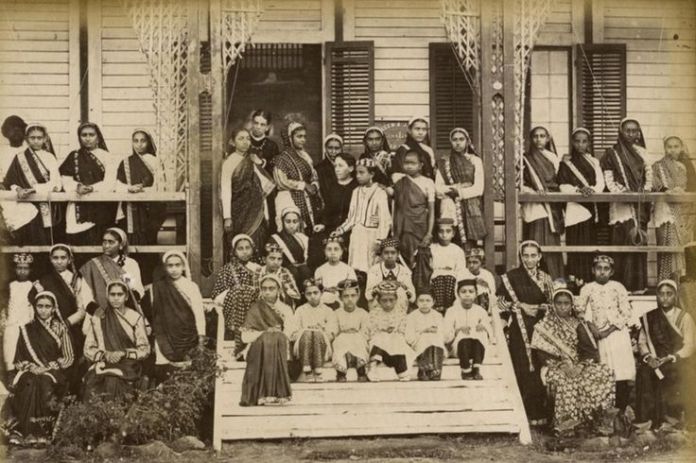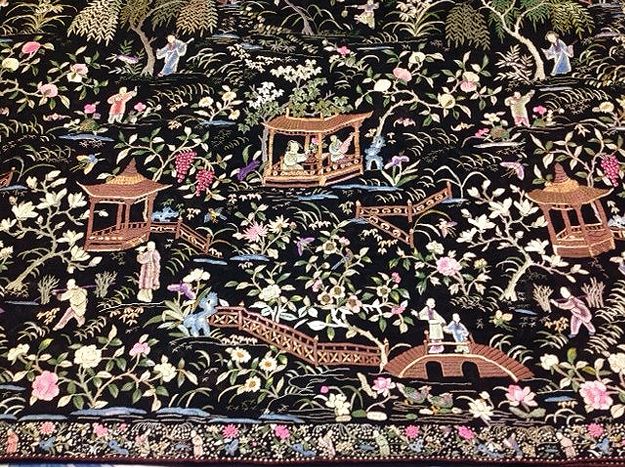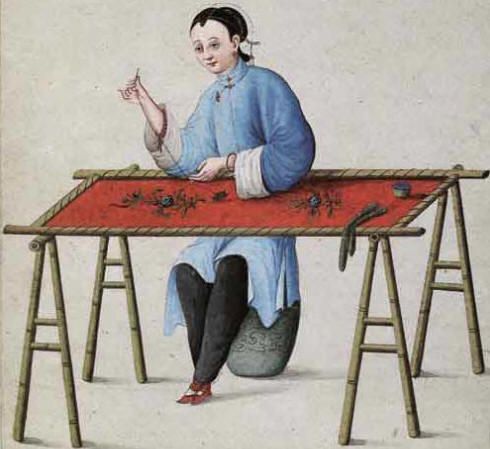Today considered as an exquisite example of traditional Indian textile, with support from the textile ministry and the UNESCO to revive and create awareness on the history, its hard to imagine that the origins of this 150 year old embroidery is linked to the opium trade with India and China in the 18th and 19th century. The much treasured antique heirlooms of today weren’t created nor conceptualized in India but in China by Chinese embroiderers who were renowned for their craftmanship.
The Parsis, followers of Prophet Zarathustra, left Iran for India, and eventually settled in Sanjan, the western state of Gujarat, India in 936 A.D. While they retained their religious customs, they gradually adjusted to the local culture, taking on Gujarati as their mother tongue and women started wearing the sari, Gujarati style. Their assimilation of western culture, life style and education brought them closer to the British and earned them trading contracts. Parsi traders traveled to the Far East, traded in China and Hong Kong, and returned with the coveted embroidered Chinese textiles.
The traders bought embroidered silks for their families and placed orders for embroidered sari borders, saris, blouses and pantaloons to be readied by the time they finished their business and were to return to India.
The embroidery was worked on a variety of Chinese silks and referred to as gara embroidery. Gara being the term for Parsi sari.
Eighty-two-year-old Nina Russi Wania, who lives in Karachi, inherited a100 year old Chinese-embroidered gara – “Earlier on, they were especially made for members of the family in India,” she told The Express Tribune, adding that the style was to wear them with white blouses. This is how symbols of pagodas and pavilions and China men came to form the resplendent borders of the garas. In Chinese design each element represents a characteristic. Of the ‘Flowers of Four Seasons’, the plum blossom is a symbol of winter, the peony and orchids are symbolic of spring and good fortune, the lotus is the symbol of summer, and chrysanthemum is symbolic of autumn and longevity.
Due to the demand, a sizable community of Chinese embroiders settled in Gujarat and the quality of their work was at par with that of their country men. Across India Pheria Vendors (Chinese craftsmen cum door to door salespeople) use to carry bundles of embroidered silk on their bicycles to rich Parsi homes.
Brenda Gill in the embroiderersguild.com tells us of a humorous incident during one such visit by a Chinese embroider called John (throughout India, all Chinese vendors were called Johns for some reason), faced with a barking house dog hesitated at the garden gate. The memsahib exhorted John to ignore the dog and enter. For reassurance she said, “John, don’t you know the proverb that barking dogs don’t bite?” To which the hapless John answered, “Memsahib, you know ploverb, I know ploverb, but does doggy know ploverb?”
On other occasions, the craftsman would sit of the verandahs of Parsi homes and create custom pieces on their small embroidery frames. The Parsi women would observe the Chinese craftsmen as they went about their work “including their use of curved needles” and in doing so, learnt the art of making jhablas (children’s tunic-like tent dress) and kors (borders used for gara saris and other garments). The women with practice became skillfully at it.
In turn they trained local artisans, called karigar (workman) perhaps from the Persian kargar meaning worker. Over time they incorporated local skills like zardozi embroidery, Georgette and crepe fabric were used and replaced the dragons and snakes of Chinese design with roosters (symbolic of Sarosh Yazad) and fish that were more familiar symbols in the Zoroastrian tradition. The resulting embroidery style and technique is frequently called Parsi embroidery, a recognized discipline.
The cheaper cost of local labour and the second world war, where there were rumors of the Japanese infiltrating and pretending to beChinese Pherias lead to the disappearance of the Chinese embroiders and the import of gara embroideries.The gara became a part of family heirlooms and Parsi women forever discovered their place in the country’s fashion archives. Garas today cost between US$3,000 and $15,000 each and more depending on their antiquity. Each piece still takes 9 – 14 months to create!
The UNESCO PARZOR PROJECT aims to rekindle interest on the history of Parsi gara embroidery. Very lovely garas have been reproduced under its patronage. In order to address current trends they are creating products like cushion covers, bags and scarves while being sensitive to the original embroidery form.
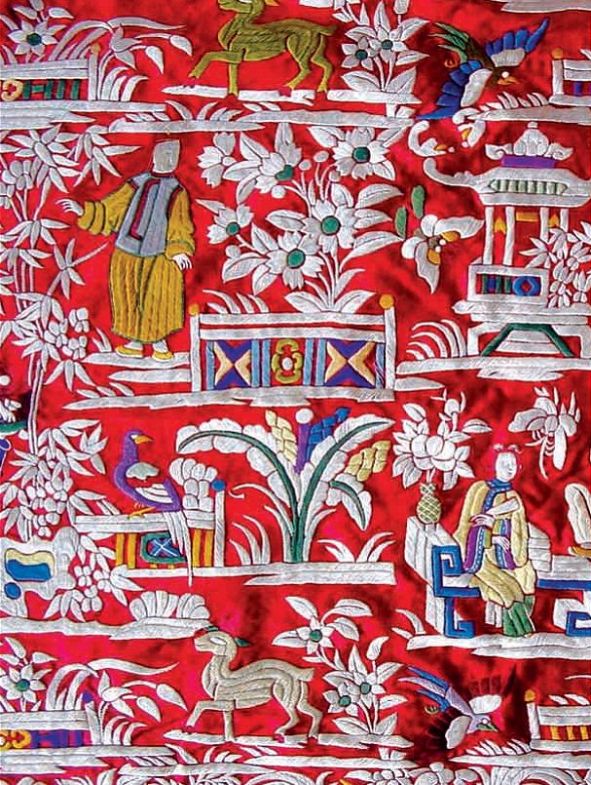
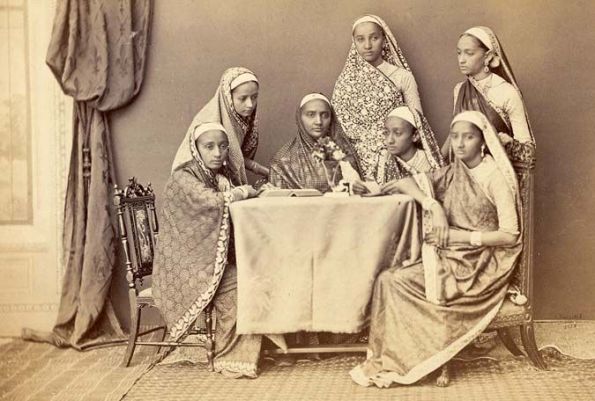
Image & source courtesy –http://www.craftrevival.org; http://www.heritageinstitute.com; http://www.unescoparzor.com; google.com;www.pintrest.com/zakiaddada

